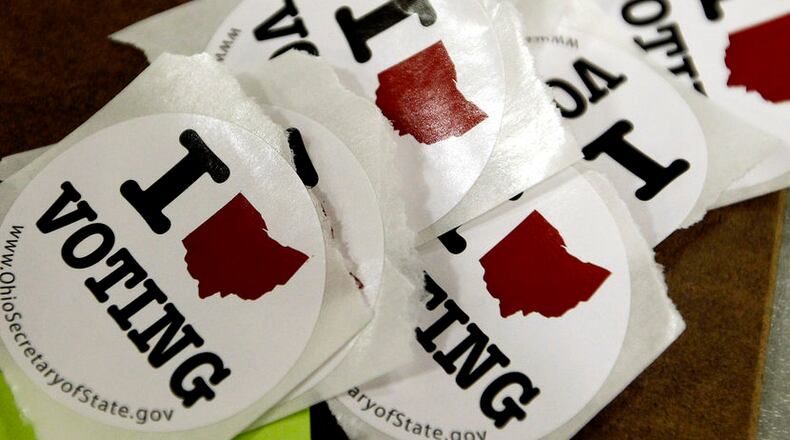Here’s what you need to know about the case:
President Trump supports Ohio’s actions
Adding to the mix, the Trump administration reversed the position taken by the Obama administration and is now backing Ohio’s method for purging voters.
Ohio has used the process for a while
Ohio has used voters’ inactivity to trigger the removal process since 1994, although groups representing voters did not sue the Republican secretary of state, Jon Husted, until 2016. As part of the lawsuit, a judge last year ordered the state to count 7,515 ballots cast by people whose names had been removed from the voter rolls.
A federal appeals court panel in Cincinnati split 2-1 last year in ruling that Ohio’s process is illegal. In May, the Supreme Court agreed to hear the case.
How do you get removed from voting rolls?
Under Ohio rules, registered voters who fail to vote in a two-year period are targeted for eventual removal from registration rolls, even if they haven’t moved and remain eligible. The state says it removes names only after local election boards send notices and there’s no subsequent voting activity for the next four years. Ohio argues this helps ensure election security.
“It’s important for us to keep up-to-date, accurate voter logs,” said Aaron Sellers, a spokesman for the Franklin County Board of Elections in Ohio’s largest county.
The main argument on behalf of voters whose registrations were canceled is that federal voting law specifically prohibits states from using voter inactivity to trigger purges. The state “purges registered voters who are still eligible to vote,” former and current Ohio elections officials said in a brief supporting the voters.
Supreme Court often splits on these types of cases
At the Supreme Court, voting cases often split the court’s liberal and conservative justices. Civil rights groups contend that a decision for Ohio would have widespread implications because there is a “nationwide push to make it more difficult and costly to vote,” as the NAACP Legal Defense and Educational Fund told the court. A dozen mainly Democratic states also want the Supreme Court to declare that Ohio’s system violates federal law.
Ohio is not the only state that purges voters
Ohio, backed by 17 other mostly Republican states, said it is complying with federal law. The state, where Republicans have controlled the secretary of state’s office for all but four years since 1991, said it first compares its voter lists with a U.S. Postal Service list of people who have reported a change of address. The problem, the state said, is that some people move without notifying the post office.
So the state asks people who haven’t voted in two years to confirm their eligibility. If they do, or if they show up to vote over the next four years, voters remain registered. If they do nothing, their names eventually fall off the list of registered voters.
The Trump administration said the practice complies with federal law because people are not removed from the rolls “by reason of their initial failure to vote.” They are sent a notice, the administration said in its Supreme Court brief, but only removed if “they fail to respond and fail to vote” in the elections that follow the notice.
A decision in Husted v. A. Philip Randolph Institute, 16-980, is expected by late June.
- By Julie Carr Smyth and Mark Sherman, AP
About the Author
